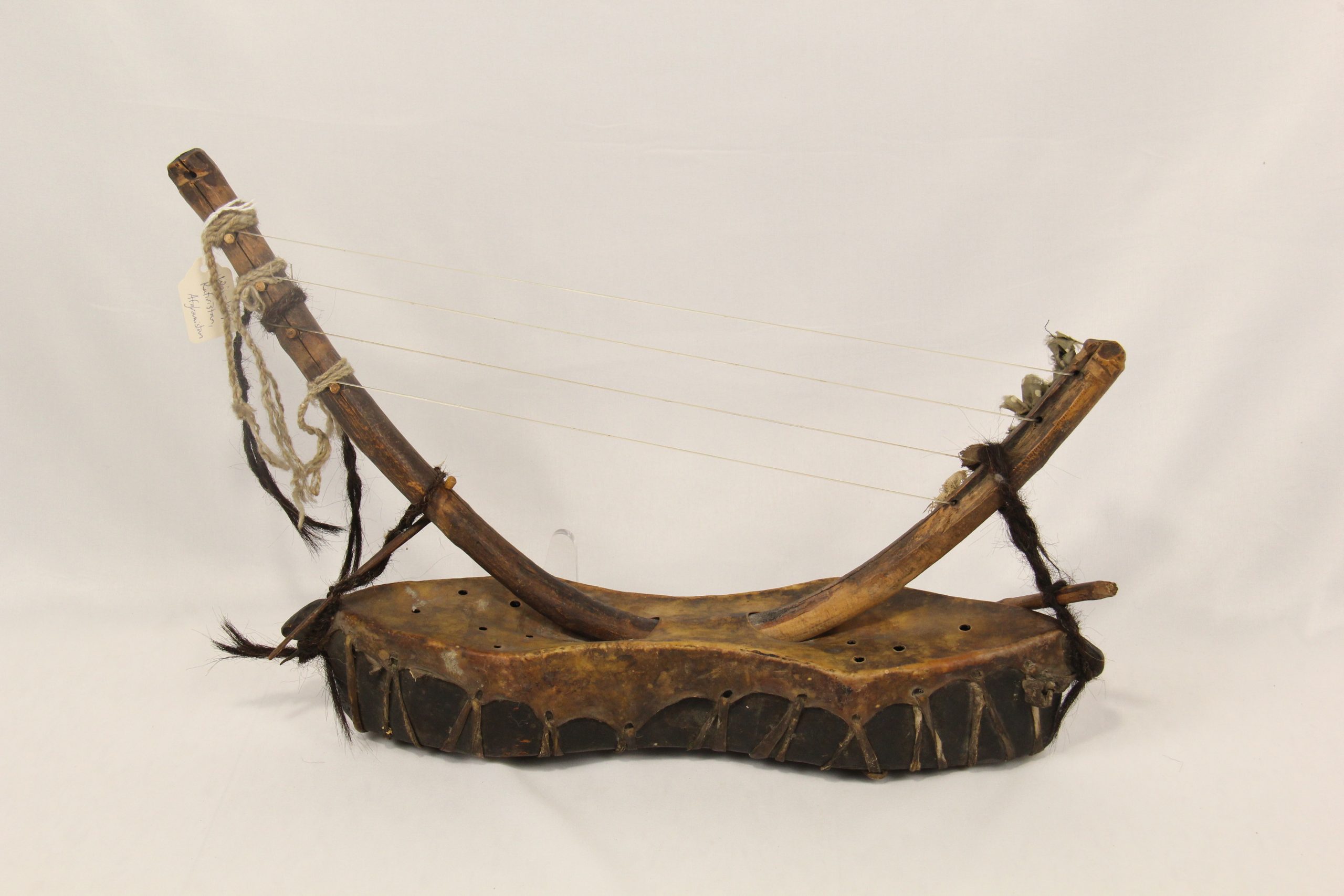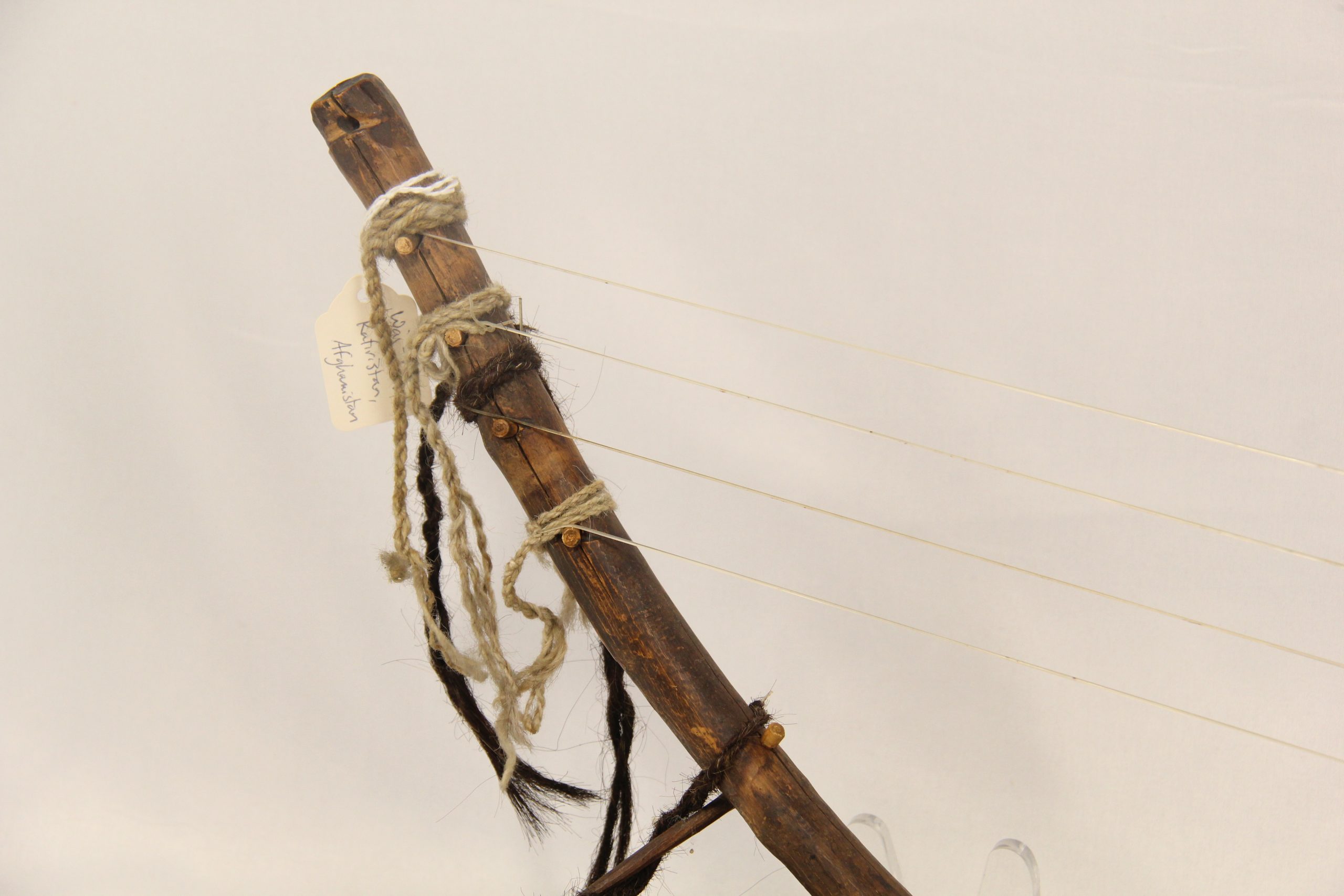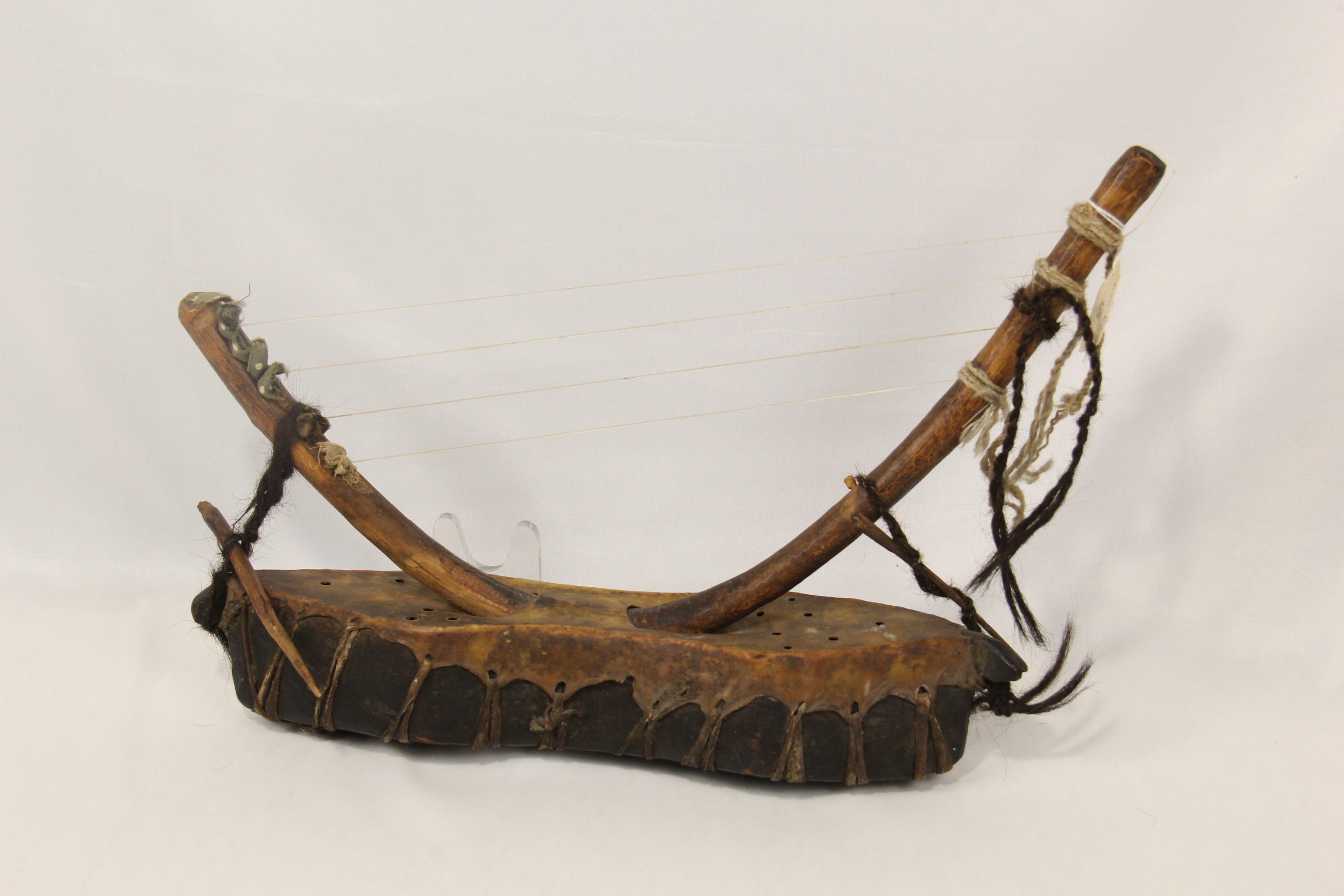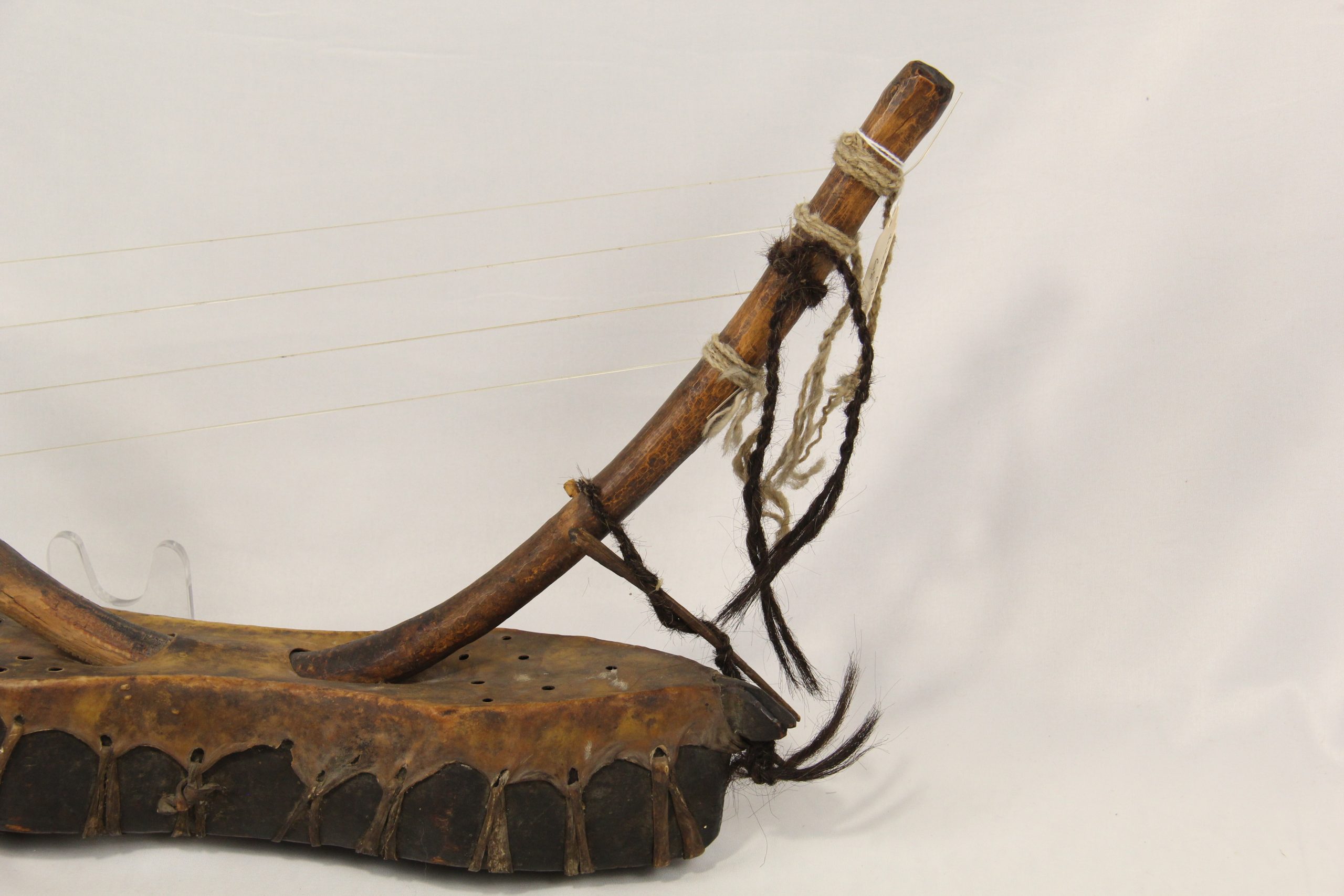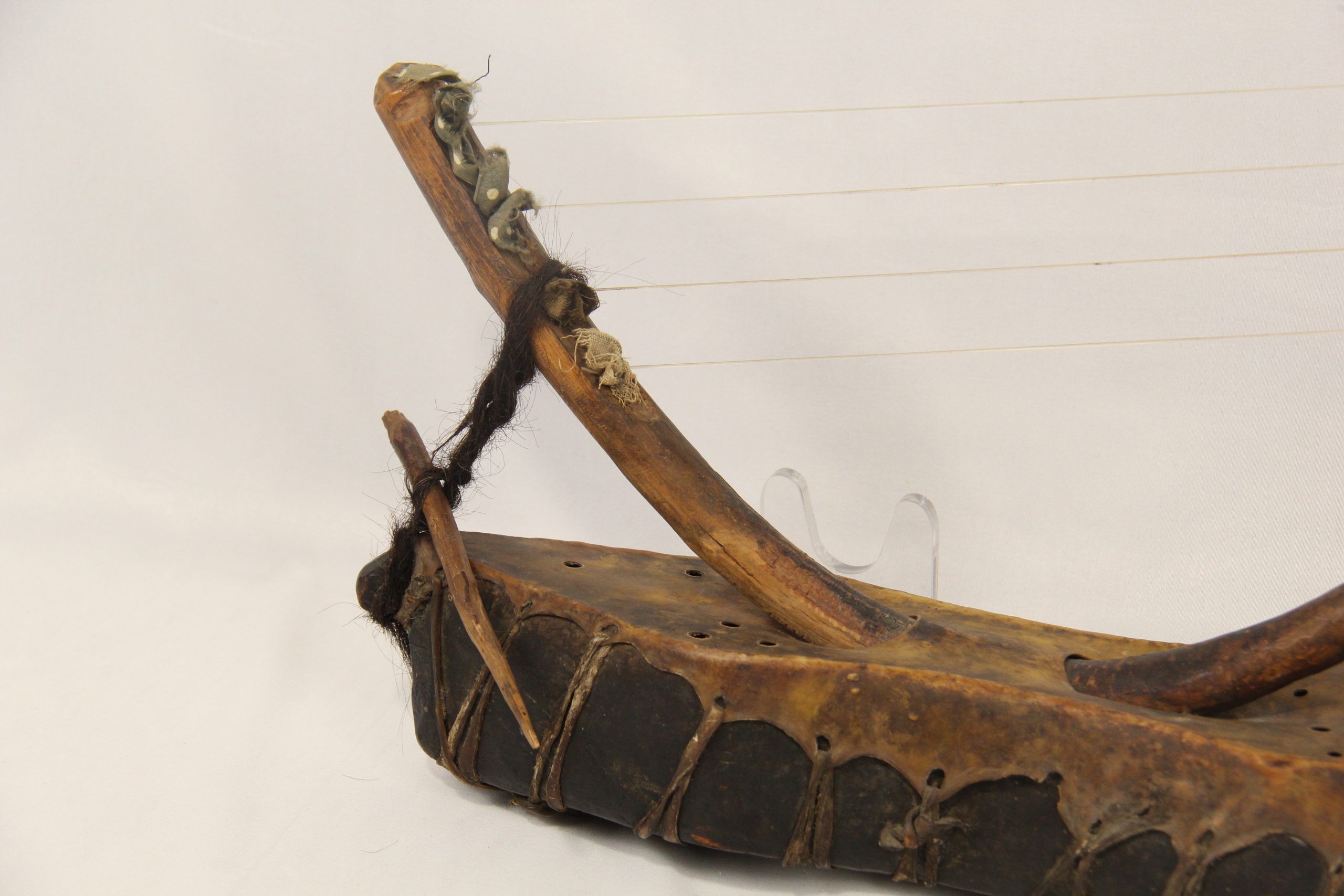Waj
Details
- Origin: Kafiristan, Afghanistan
- Date Made: Likely early to mid 20th century
- Collection: DHB 68
Description
The instrument has two main parts, the soundbox and string holder. The hollow wood soundbox is the base of the instrument, and is covered by animal hide. The four plastic strings are attached to a bow-shaped string holder, usually a bowed stick or branch, and are arranged in a vertical plane parallel to the soundbox. There are pegs resembling tuning pegs on one side of the string holder, but these are in fact only for holding the strings in place. The instrument is tuned by adjusting the hanging ends of the strings/cords. Because the soundbox and string holder are not a singular unit, and the string holder could technically be used independently of the soundbox, this instrument differs significantly from a typical bow harp. For this reason, it also has resemblance to the zither family of instruments, and has often been called a harp-zither.
This instrument, also known as the Kafir harp, is used almost exclusively by Kafirs in the Nuristan province of Afghanistan. This instrument is not presently found in any other parts of Afghanistan, and is of great significance to Nuristan culture. It is often used for social gatherings and storytelling events, as storytelling and music are closely related for the Kafirs.
This harp is always played with a plectrum of some sort, held with the dominant hand and gliding over the strings while the non-dominant hand mutes the strings which are not to be played. The Waj was usually played as epic stories and heroic tales were told or sung. There has been evidence of similar harps found in Sumerian graves in Mesopotamia, and it also resembles harps seen in paintings over 2,000 years old from northwest India. This suggests that the instrument may have come into the region during the spread of Buddhism between the fourth and eleventh centuries.
Sources
- Alvad, Thomas. “233. The Kafir Harp.” Man 54 (1954): 151–54. https://doi.org/10.2307/2795578.
- Klimburg, Max. “The Arts and Societies of the Kafirs of the Hindu Kush.” Asian Affairs 35, no. 3 (2004): 365–86. https://doi.org/10.1080/0306837042000241046.
“Waj.” Met museum. Accessed June 16, 2022. https://www.metmuseum.org/art/collection/search/690467.
